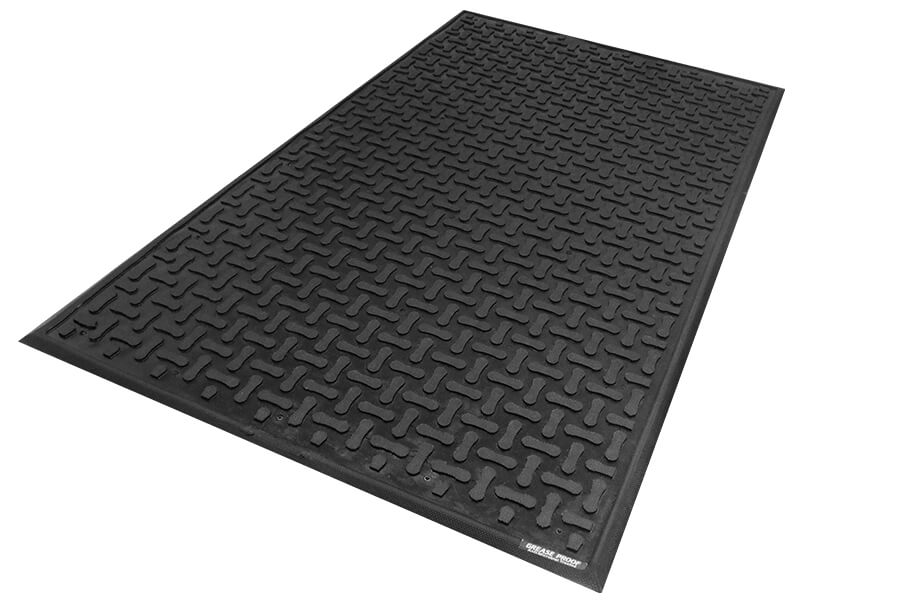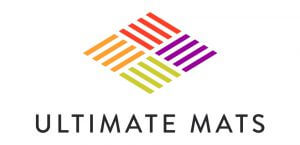
How to Clean Dirt Trapper Mats
In any business, some surfaces are fairly easy to keep clean, such as the walls, checkout counter, and doors. And then there are others that are designed to get dirty, like a burger grill, an oil or grease pan in an auto shop, or the lint trap in a clothes cleaner. Though the surfaces in this latter category don’t have to be kept spotless at all times, they should still be cleaned on a regular basis to keep the business functioning smoothly.
A dirt-trapping entry mat falls into the latter category. They’re designed to grab all the dirt, debris, and grime off your shoes, so visitors don’t track it into the foyer or lobby. However, this residue builds up over time, and eventually, the mat will become so saturated that it can’t trap any more. Once you’ve found the best doormat for trapping dirt, clean it regularly using our tips and advice for the best performance.
Cleaning Rubber Mats
Many dirt trapper mats (like the SuperScrape from Ultimate Mats) are manufactured partially or completely from rubber, which is a durable, all-weather material that resists deterioration over time. Depending on the amount of traffic and weather conditions, rubber mats may not need to be cleaned every day, but you should probably rinse them off at least once a week. An ordinary garden hose will work fine for most loose dust and debris.
To get rid of dirt and other substances, you can take a brush or broom and scrub the mat thoroughly (don’t be afraid to use elbow grease!). A mild detergent or a degreaser without butyl in it can be combined with hot water and used as a cleaning solution. Then rinse the mat with low- or medium-pressure hot water and allow it to air dry.
Generally speaking, it’s not a good idea to use bleach, butyl-based degreasing products, or other chemicals on dirt stopper mats. While certain chemicals are formulated for use on rubber, most will eat away at the surface and shorten the mat’s lifespan. Consult the product label if you are unsure. If the mat has a fabric surface, you should also never use any sort of fabric conditioner, as it can reduce the mat’s dirt-trapping effectiveness.
Cleaning WaterHog Mats
WaterHog entry mats are made from premium polypropylene material that resists fading, making them suitable for both indoor and outdoor use, and are available in various personalized styles. These mats trap both dirt and water and have a much deeper subsurface than standard rubber mats so they can handle heavier foot traffic. Both of these elements must be considered when doing maintenance. The approach to cleaning a WaterHog outdoor mat largely depends on whether the mat is dry or wet.
If the WaterHog mat is simply dirty and hasn’t soaked up any water, a regular dual-speed vacuum cleaner on the lowest setting to the ground may be sufficient to pull the dirt out of the mat. In cases where the mat is fairly wet, a self-contained brush and extraction system would probably work more effectively. If the WaterHog mat exhibits persistent crusty stains from salt, soaking it in hot or warm water for thirty minutes or more should loosen them up. If you do happen to see some stains on your WaterHog mat, it is colorfast enough for you to utilize standard spot-cleaning solutions to clean the affected areas.
Keep Your Entry Mats Clean
If you have questions about how to clean your dirt trapper or water trapper mat, Ultimate Mats can assist you with whatever you might need. Our knowledgeable customer service team has additional tips that cover all sorts of situations they’ve seen. If you find that you need a new dirt trapper mat, there are several types of WaterHogs and SuperScrape mats to choose from, including logo display options and fashion mats. Contact Ultimate Mats today!
Frequently Asked Questions (FAQs)
What makes water trapper mats different from regular doormats?
Unlike regular doormats, water trapper mats are specifically designed to absorb more dirt and moisture. The raised design and rubber backing prevent water from spreading and keep the mat steady, even in areas with double doors or high traffic. Their unique design helps keep the floors clean for longer.
How do dirt trapper carpets effectively capture mud and debris?
The weave on mats that trap dirt scrapes off mud, sand, and debris before it can be tracked indoors. The dirt stays between the ridges instead of spreading across the entry. A dirt trapper carpet keeps hallways looking cleaner with less effort every day.
What is the best way to clean a water trapper mat at home?
You should shake out any loose debris, then rinse the water trapper mat with mild soap and warm water. Let it dry completely before putting it back in place. Regular care keeps color fresh and helps it last.
How often should mats that trap dirt be washed or deep-cleaned?
Weekly care is best for WaterHog mats near doors. If the spot isn’t too busy, cleaning the mat once every few weeks is also fine. Regularly wiping or rinsing these mats keeps the rubber backing intact and reduces the frequency at which you need to replace your dirt trapper carpet or water trapper mat, even in high-traffic areas.
Are dirt trapper mats machine-washable, or do they require hand cleaning?
Some smaller dirt trapper carpet mats are suitable for gentle machine-washing, though you must review the manufacturer’s care instructions first. Larger water trapper mats and heavy-duty mats that trap dirt often perform best and last longer when rinsed with a hose and then air-dried flat.
